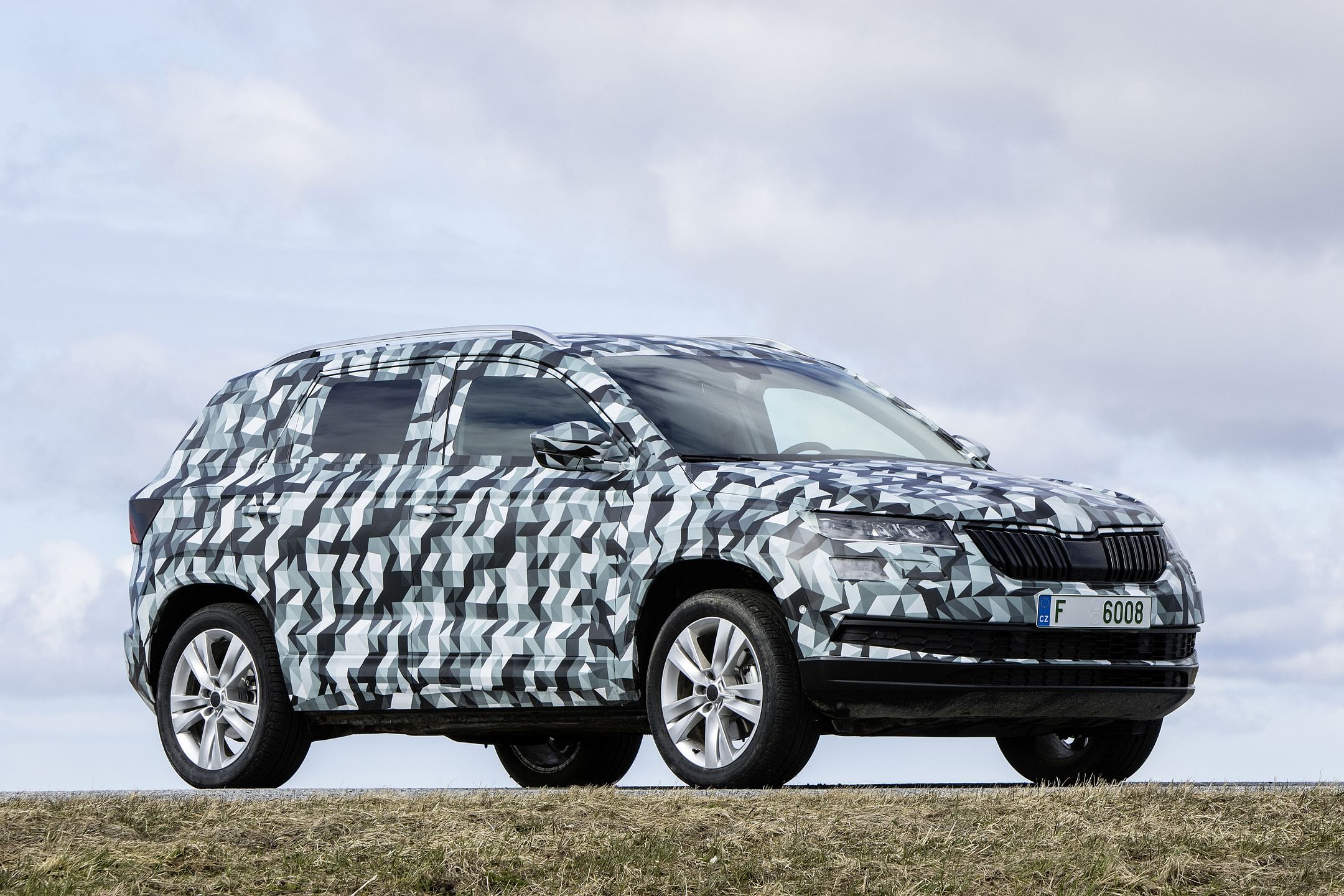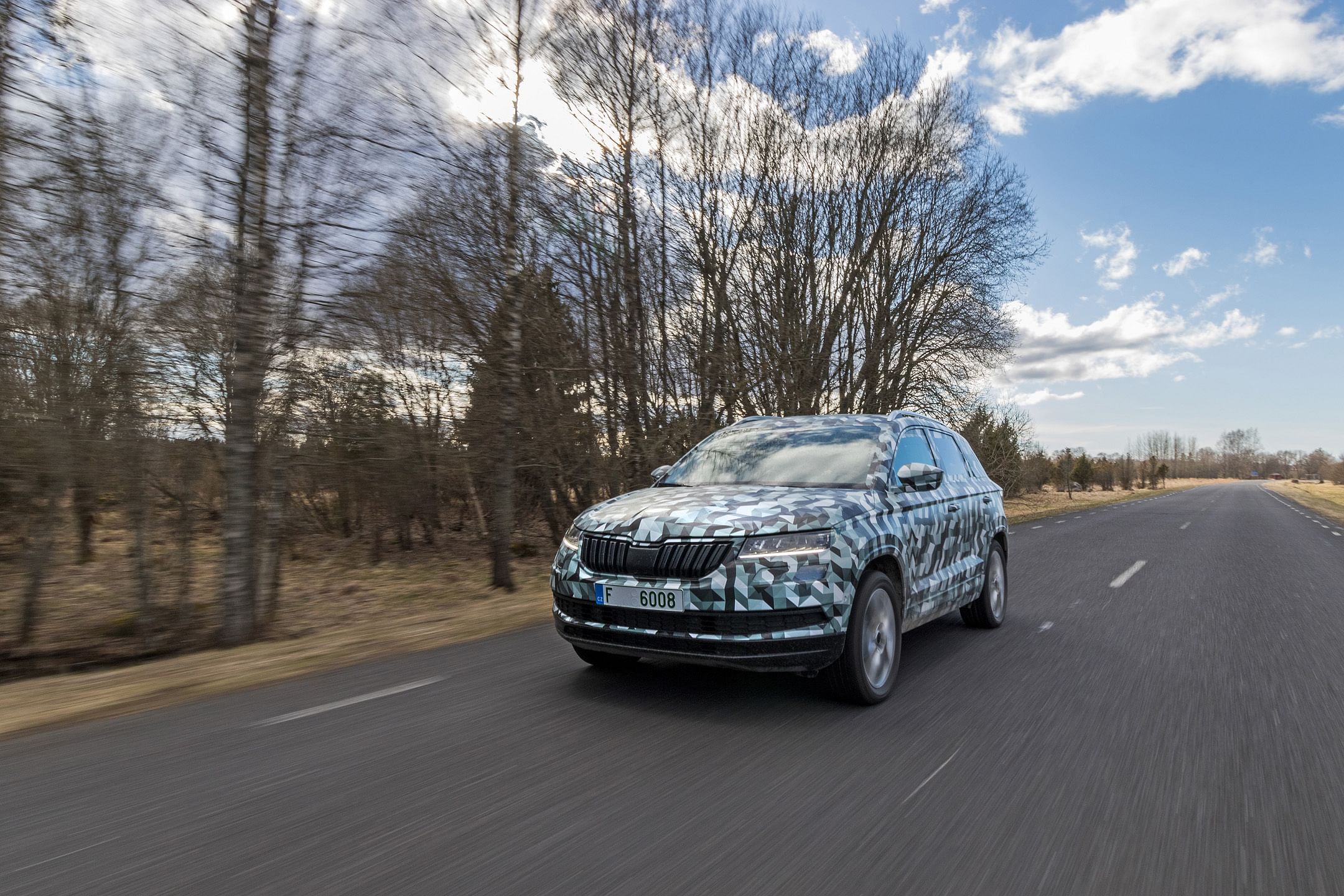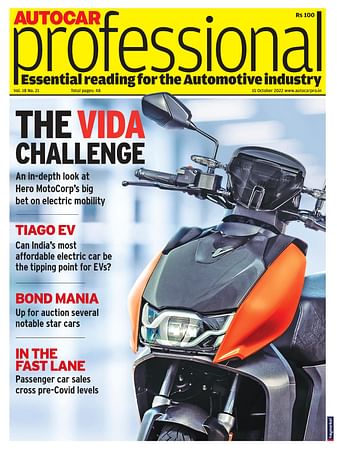Skoda Karoq global reveal on Thursday
Yeti replacement uses MQB platform, gets four new turbocharged engines and a Kodiaq-like appearance. We'll see it for the first time two days from now.
The Skoda Karoq will launch this Thursday with an all-new exterior design, advanced driver assistance technology and four new turbocharged engines.
Ditching the unique exterior shape of its predecessor, the Yeti, for a more conventional SUV body, the Karoq shares many features with the larger Kodiaq, which it sits below in Skoda’s line-up.
Despite filling its space in the range, Skoda interior designer Arne Leetz explained that the Karoq isn't a replacement for the Yeti but rather an all-new car. “The Yeti will remain a legend," he said.
The Karoq's name is a combination of ‘kaa’raq’ (car) and ‘ruq’ (arrow) in the language of Alaska’s indigenous people, linking it with the Kodiaq, which also gets its name from the same region.
It arrives as Skoda plans to shift its brand identity into a new realm. “We want the brand to be classless," explained technical development boss Christian Strube. "Take the place of Volvo which has now moved upmarket. Thirty years ago my father owned a Volvo because it was the understated option."
Skoda is marketing the Karoq as a small yet practical family SUV, to set it apart from the sportier Seat Ateca and pricier Volkswagen Tiguan, with which it shares parts. “All passengers have equal rights," said Karl Neuhold, the car's exterior design chief.
The Karoq has space for five passengers and has a boot capacity of 521 litres or 1630 litres with the back seats folded down. This comfortably beats the car’s main rival, the Nissan Qashqai, which offers 430 and 1585 litres respectively.

Built on the Volkswagen Group’s MQB platform, the Karoq comes with a choice of five turbocharged engines, four of which are new to Skoda.
The new petrol engines are an entry-level 1.0-litre TSI three-cylinder with 113bhp and 129lb ft and a 1.5-litre TSI with 148bhp and 184lb ft, with the latter enabling an 8.4sec 0-100kph time and featuring active cylinder technology.
There’s a new diesel 1.6-litre TDI that produces 113bhp and 184lb ft while emitting just 118g/km of CO2, and a new 2.0-litre TDI that outputs 187bhp and 295lb ft, enabling a 7.8sec 0-100kph time – the quickest available.

These new Skoda units are joined by a 2.0-litre TDI that’s familiar to the brand, which produces 148bhp and is the most fuel-efficient engine, offering 64.2mpg/22.73kpl combined and outputting 115g/km CO2.
The Karoq comes in two and four-wheel drive guises and with a choice of a six-speed manual of seven-speed DSG automatic gearbox. In higher-spec it comes with Skoda’s Drive Mode Select system, which enables the car’s drivetrain to be switched through Normal, Sport, Eco, Individual and Snow.
A hot vRS version looks on course to join the range at a later stage, possibly making use of Skoda's 217bhp turbocharged 2.0-litre engine that's used in the Octavia vRS. Leetz hinted at the model's arrival. He said “It is imaginable. Just take our smile as an answer”.
Driver assist systems include a radar-based adaptive cruise control, blind spot detect and front assist, which includes automatic city braking with a pedestrian braking system.
There’s also hill hold control to prevent roll back and emergency assistance, which can intervene if the driver becomes incapable of driving and adaptive cruise control and lane assist are on.
In-car, technology includes gesture control for certain functions, wireless phone charging, as well as a mobile online connection that works with the infotainment. In top spec, the infotainment has a screen of up to 9.2 inches and three other displays, including a new digital instrument cluster that makes its debut in a Skoda.
Skoda is yet to confirm pricing, but the Karoq’s expected to follow the brand’s aggressive pricing strategy.
A smaller SUV will be launched to sit below the Karoq at a later stage. It will be "different to the VW T-Roc – smaller," said Strube, "and designed primarily for the Chinese market, for younger drivers buying their first car".
Strube wouldn't comment on whether the smaller model would be based on the Seat Arona's platform, but he did reveal that it would get "a name in line with Kodiaq and Karoq”.
RELATED ARTICLES
Sept 2024 From R&D incentives to EV infrastructure: What auto components industry expects from Budget 2024
Sept 2024 From R&D incentives to EV infrastructure: What auto components industry expects from Budget 2024
US car majors hit the brakes on driverless cars
Ford Motor and Volkswagen to close self-driving startup Argo AI, due to lack of technology and clear regulations.
Autoliv and Geely to develop advanced safety tech for future vehicles
Scope of cooperation includes safety for high-level autonomous driving, intelligent steering wheel technology, a 360deg ...






 16 May 2017
16 May 2017
 3447 Views
3447 Views




























 Autocar Pro News Desk
Autocar Pro News Desk




